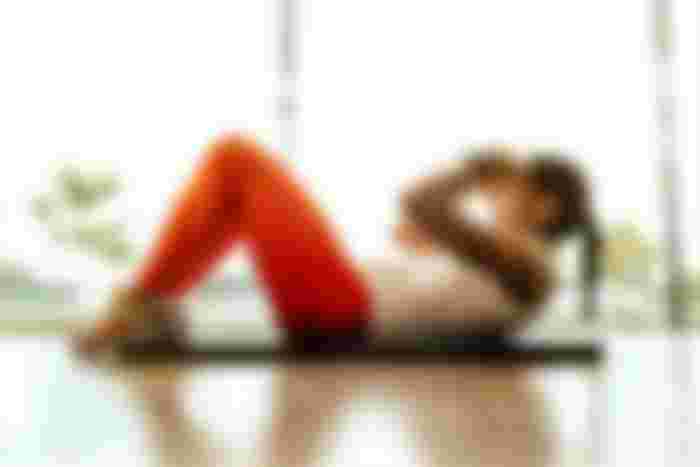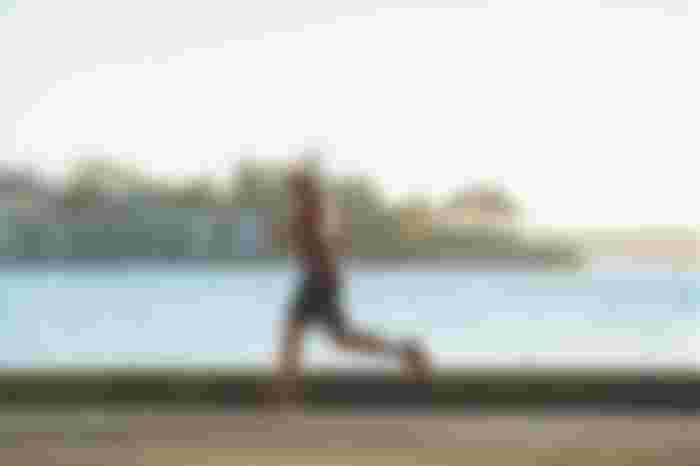Muscle cramping and side stretches are very common effects of exercise that we all hate to happen.
This afternoon in a hydrotherapy session with my colleague on his osteoarthritic patient, the latter complained of intense muscle cramping while doing gait training in the pool. The therapist desperately rushed to save his patient held immobilized in the water. This was the patient's third time to do hydrotherapy and the therapist as well assumed that the patient did warm up exercises before the treatment session. Anyway, we all know muscle cramping and side stretches are bound to happen during exercise, it is always necessary to take heed of what should be done in case it inevitably happens and what to do to avoid it.

Muscle Cramping can be due to poor conditioning and muscle fatigue, often people from colder climates develop this when they proceed exercising without warm up because the muscles are still stiff due to the cold weather. The most common muscle to experience cramping is the muscle at the fleshy back part of the leg or the gastrocnemius muscle. It is important to know what should be done when muscle cramping attacks. If this happens, immediately stop exercising and stretch the affected muscle until it relaxes before resuming your workout.
Side Stretch (Exercise Related Transient Abdominal Pain) is the sharp pain below the rib cage, this usually happens while running, jogging and brisk walking. This is a type of cramp that is cause by frequent jarring while breathing in and out during running, thus stretching the Coronary Ligament that connects the diaphragm to the liver.
When side stretch happens don't stop abruptly, just gradually slow down your pace from running to walking while putting a slight pressure on the painful area. Perform stretching on the affected side by raising the arm on the same side and stretch away from the painful part. You can avoid this from happening by doing core exercise beforehand as warm up. Core includes the chest muscles, back and the abdominals.

Now, if you really decide to do regular workouts, remember these warm up and cool down tips to avoid cramps:
1. It is best to do 5-10 minutes stretching for warm up.
2. Avoid ballistic stretching. Ballistic movements can cause pulled and tear muscle. This can also traumatize joints which will eventually lead to degenerative changes or arthritis.
3. Streching can be done by holding the position fot 7-10 seconds. If you have tight muscles, it is better to hold it longer up to 20-30 seconds. Then repeat each movement for 5-10 repetitions. This will really help to improve flexibility and circulation to avoid injury.
4. The more strenous your workout, the more warm up you will need. Older athletes will require gentler but longer (more repetitions) warm up.
5. People doing weight training should start with minimal resistance so your muscles and ligaments can adjust with the load. Never overload your muscles abruptly or else you will suffer with musculoskeletal injuries sooner.
6. Cool down is also very important, 10 minutes of slow walking, stretching will do.

Exercise should be a part of our weekly activities, 30 minutes a day 5x a week is already a great start, and/ or enough regimen for health and fitness. But we should also take note on how to take care of our body as we carry out this activity. Our muscles and other supporting structures like ligaments and joints also require gentle care while we workout, give your muscles a time to adjust and recuperate to avoid injuring it.
Moreover, we should also observe our diet and food choices, like eating fruits and vegetables and drinking at least eight glasses of water a day. Our sleep is also very important. These are great things to consider in order to condition our body in the activities we wish to perform, and ultimately a healthy shape.
Thanks for reading and I hope you learned something from here.
Related articles:
Can You Stay Slim After Dieting?
What are The Benefits of Sports
Photos from Unsplash with attribution (free images)
Photo below is mine





[Removed comment]